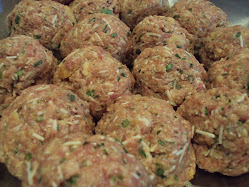Well 2010 was a bit of a bust for me. I ended up jamming my back up big time, 3 herniated discs and a few minor operations later I am back, well sort of. Feeling better, weaning myself of some painkiller meds with spirits up I am looking to the spring and renewal. Not only for myself but also for my family, veggies, small stock, boat, and community. During my multi-month back injury affair I watched the entire Summer and Fall pass me by only with winter left. So whats there to do in a garden during winter one would ask? Lots and lots. The soil quality degrades during each growing season, plants in general are takers not givers ( legumes feed the soil while they grow with by releasing some nitrogen back to the soil ), so its up to you to figure out how to set the stage to return free nitrogen, etc to the soil.
You could dump chemical fertilizers in to balance, but I would recommend that. Chemical fertilizers do not break down efficiently and often end up in the watershed and then in our drinking water... There are easier cheaper better ways to inject the required elements back into your soil that the plants use up. POOP is the best, and it doesn’t really matter what the source is as long as it has composed nicely. In my case my veggie beds needed some poop, actually a lot, more than my hens could produce. Lucky for us we live in the country so a quick scan of craigslist and I had a mountain of steaming free nitrogen in my driveway, horse manure about 10 yards total. Delivered up the street from a stable that doesn’t use any hormones or other chemicals in its operations (its good to know where your poop comes from!). It was ripe indeed and I thought for sure that the pile of poop would merit at least one or two comments from my local neighbors, but there were none. Be sure to tarp your poop! It’s very important that when you get a ripe pile that you compose the urea and kill of fly larva. The internal temp gets amazingly hot up to 120+ degrees. It basically cooks itself and after a few weeks the urea smell becomes sweet and straw like. Then it’s ready for depositing into your garden.
I am big on the whole layered veggie beds, every season I just layer green manure (leaves, clippings, hay etc), animal manure and some soil on top. Its important to understand that plant roots desire the spaces between particulate material in your soil. If it too compact they cannot eat or drink efficiently. You can till or rip your soil but it often unnecessary. Large commercial operations must rip their fields because they become compacted by all the vehicles and people trampling over them. Here in the central valley of California the soil is referred to as China Lome a combination of organic materials deposited over the millennia by oceans, rivers and seas. Its good stuff unlike the clay laden soils in other parts of California.
My next big adventure will be a worm farm…yep a big old pile of worms….
Between now and then here is a repeat from last year its my Hoppin John recipe…you must eat it today for good luck….
Hoppin’ John. This dish’s origins are humble; The dish is believed to have originated in Haiti among those unfortunate souls who had been stolen from Africa to work the plantations of the Americas. They used what they had on hand, often the lesser cuts of meat, and those items that could be scrounged up in the surroundings. What the dish looked like 400 years ago and what it looks like today probably have changed little. The two primary ingredients are beans and salt pork. In addition to this you can add the trinity (onion, celery, and peppers). Okra, leeks, etc could be added as well. The reason you make Hoppin’ John is that in the South it is believed to bring you good luck in the new year. That is enough for me to have it on my table; recipe;
4 tbls olive oil
1 leek slivered
1 heart of a celery plant (use the inner stalks and be sure to include the leafy bits at the top)
2 carrots diced
2 ham hocks or tasso ham
1 bay leaf
1lbs black eyed peas, soaked overnight and drained ( you can also use northern white, or other beans on hand)
Enough chicken stock to cover hocks and beans
Couple cloves of garlic
Aromatics, thyme, rosemary, oregano etc.
In a large stock pot add the olive oil bring up heat to medium, add garlic, leeks, carrot, celery. Sauté for about 5 minutes until the leeks become translucent. Toss in your aromatics, ham hocks or tasso ham, add bay leaf. Pour chicken stock in and put burner on low. You will slowly cook this until the meat falls off the hocks, or until the tasso falls apart and the beans are soft. Remove all the hocks pick the enable bit out of them and discard the bones and gristle. Return the meat to beans and you are good to go. You can sever it with a little crystal hot pepper sauce or on its own…enjoy.
The suburban/urban/country farmer. Grow it, Raise it, Harvest it, Eat it, Ferment it, Distill it, Drink it.
Saturday, January 1, 2011
Subscribe to:
Comments (Atom)

























